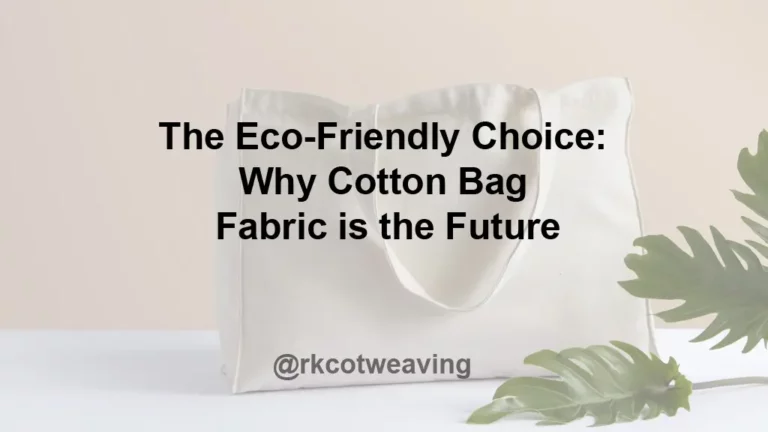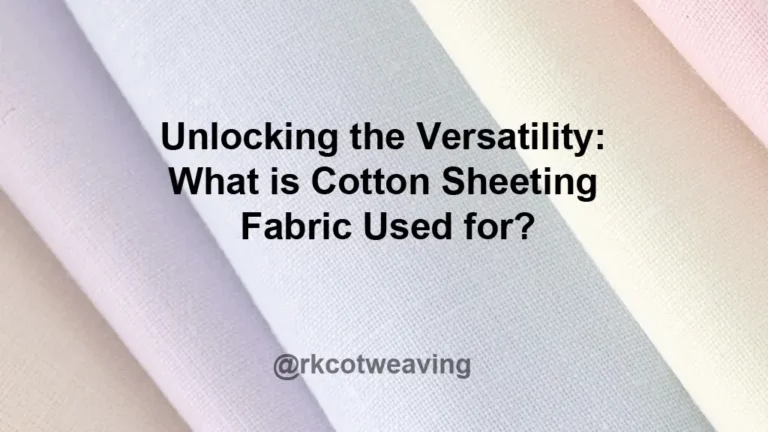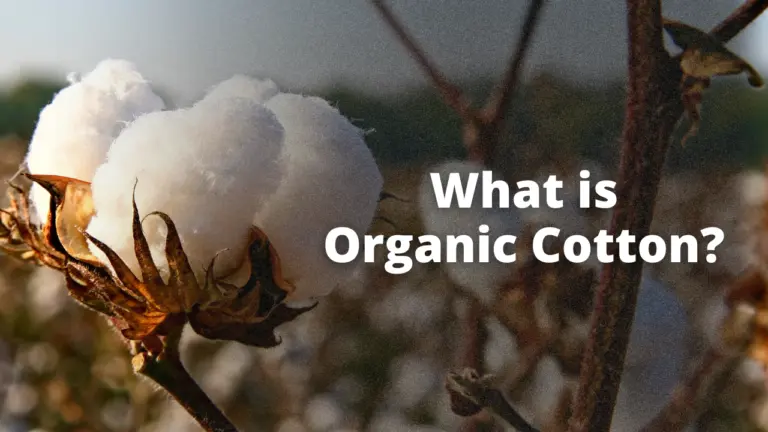2022: Global Trends in the Textile Industry

2022: Global Trends in the Textile Industry
Textile industry market presence is unavoidable. The ever-changing textile market is experiencing tremendous growth and has the potential to showcase human creativity. In 2021, the size of the global textile market was US$936.9 billion with projection that the market will increase at a compound annual growth rate (CAGR) of 4.37% from 2022 to 2027, reaching US$ 1,217.1 billion.
The following are some of the most significant global textile industry trends for 2022.
SUSTAINABILITY
A move toward sustainable materials is another major trend for the textile sector. Customers are searching for more environmentally friendly solutions as concerns about climate change increase. In response, the textile industry has changed its tactics to be more consumer-friendly and sustainable.
The textile industry employs the following methods to adopt more sustainable behaviour:
- Creation of recyclable clothing: Using more renewable materials has been one of the textile industry’s most important sustainability updates. For instance, many businesses now see the creation of textiles as a circular process rather than a linear one. Utilizing organic, recyclable, or biodegradable materials in manufacturing is the major aspect of this shift in perspective. Customers can then reuse textiles or allow them to decompose naturally rather than using them just once.
- Reconsidering chemical procedures: Clothes are coloured, pressed, and occasionally waterproofed in the last phases of textile production. During these operations, manufacturers utilise a lot of dangerous chemicals and extra water. By selecting safe chemicals and using as little water as possible, many businesses may cut back on their usage.
Consumers will probably keep pushing textile industries for more environmentally friendly methods as time goes by. Businesses who answer these calls will gain the trust of their clients and may see an increase in sales.
DIGITAL TEXTILE PRINTING
One of the more recent advancements in the textile business is digital textile printing. In contrast to conventional textile procedures, this tactic prints a picture of a data file onto the materials. As an alternative, conventional textile printing uses rotary screens to pass colours through. Considering how simple it is to use and how little of an environmental impact it has, digital printing is still becoming more and more popular.
The adoption of digital printing processes in the textile sector has increased recently, and it is expected that this trend will continue as the technology advances. Designers are constantly coming up with ways to make digital printing more efficient and profitable. It grew significantly throughout the 2010s and is anticipated to continue growing in the 2020s.
Digital textile printing has a number of benefits, which help to explain why it is so well-liked in the sector:
- Cost-effective: Compared to conventional textile gear, digital printers use a lot less material. Overall costs are reduced because rotating plates and engraving supplies are not typically required. Additionally, because you don’t have to make new engravings only for a few pieces, it’s a cost-effective choice for smaller orders. Smaller textile companies like being able to fulfil smaller orders without incurring additional costs.
- Quick turnaround: Digital designs can be simply updated or corrected from your computer. Additionally, digital prints may be produced quickly. You may quickly change your design and print it rather than having new rotary screens for every small error.
- Flexible: With digital printing, your design options are virtually endless. Digital technologies are completely flexible for visuals and are not restricted to a set number of screens. Thus, there are no restrictions on the ability of textile manufacturers to produce distinctive designs for their clients or customers.
- Sustainability: The lowest possible environmental impact is perhaps the largest benefit of digital textile printing. Digital prints use less water and ink than traditional textile printing do. You don’t waste any water because you don’t have to wash the rotary screens for each new colour. Additionally, since digital prints employ a precise technique for applying ink to cloth, there isn’t much ink waste or extraneous chemical waste that could endanger the environment.
In general, the expansion of digital printing has been a significant factor in the recent expansion of the textile sector. They are likely to have a big impact on the future of the textile industry, according to an analysis of the sector.
NON-WOVEN FABRICS
The transition to non-woven materials is another significant trend for the textile industry in 2022. Non-woven fabrics are materials like sheets created using chemical or thermal methods. Non-woven materials are bound together chemically, as opposed to woven fabrics, which are created by spinning fibers into yarn. In Asia-Pacific and Europe, non-woven materials are particularly prevalent.
In recent years, there has been a noticeable trend toward non-woven materials. These materials have numerous benefits for a range of industries, such as:
- Resilience
- Washability
- Cushioning
- Softness
- Stretch
- Cost-efficiency
These textiles have increased in popularity recently because of how adaptable they are. Non-woven fabrics can be used for a variety of products, including agricultural covers and automobile components. This movement has been supported by the transportation and personal hygiene sectors in particular.
NATURAL FIBERS
Natural fiber demand is one of the most noticeable new textile trends. These fibers can be found in nature in places such as animal fur, plant components, and minerals. Natural fibers are plentiful all over the world and are a popular choice due to their high strength levels.
Cotton, milkweed, flax, and hemp are examples of natural fibers.
These fibers are used by manufacturers to create natural fabrics. Natural fabrics include the following:
- Cotton: One of the most popular materials on the globe, is produced directly from seeds inside cotton plants. Cotton is popular due to its low cost and soft texture. Cotton is used in the textile industry to make clothing, linens, paper, packaging, and other products.
- Silk: Made from silkworm fibers and is extremely soft and beautiful. Silk is mostly used in the clothing industry, but designers also use it in bedding and upholstery.
- Linen: Versatile and absorbent fabric made from the stem of a flax plant. Linen is used for a wide range of garments, from towels and napkins to bed linens and clothing.
- Wool: Derived from the coats of animals such as sheep or goats. This fabric is extremely warm and soft, and it is commonly used for winter clothing such as sweaters.
- Cashmere: Known for its luxurious softness, cashmere is made up of animal fibers. While it is in high demand, it is also more expensive than other fabric types. Designers incorporate it into yarn and a variety of clothing styles.
One of the main trends in the textile business for 2022 is people’s growing preference for natural fibers and fabrics. In nations like China, India, and the United States, among others, fibers like cotton grow quickly and profusely. The rapid expansion of natural fibers is a major driver of the textile industry’s expansion. Natural fiber production rates are continuously rising as demand rises, and this trend is projected to continue in the coming years.
Additionally, people favour natural fibers for:
- Durability: When compared to synthetic or processed materials, natural fibers typically possess greater strength. Since the longevity of these materials appeals to consumers, numerous sectors are increasing their usage of natural fibers to satisfy this need.
- Versatility: Natural fibers are versatile and can be used for a variety of things. Many investors find these fibers to be appealing since they perform well in a variety of applications, including automotive interiors and garments.
- Environmental Impact: Cotton and other natural fibers are often biodegradable. In light of environmental concerns, many sectors look for eco-friendly materials for their goods. Natural fibers are less harmful to the environment than other types of materials, which will increase their appeal in the 2020s.
The growth in demand for natural fabrics is largely responsible for the income generated by the textile sector. Given the consistent annual rises, it appears that this tendency will persist.








